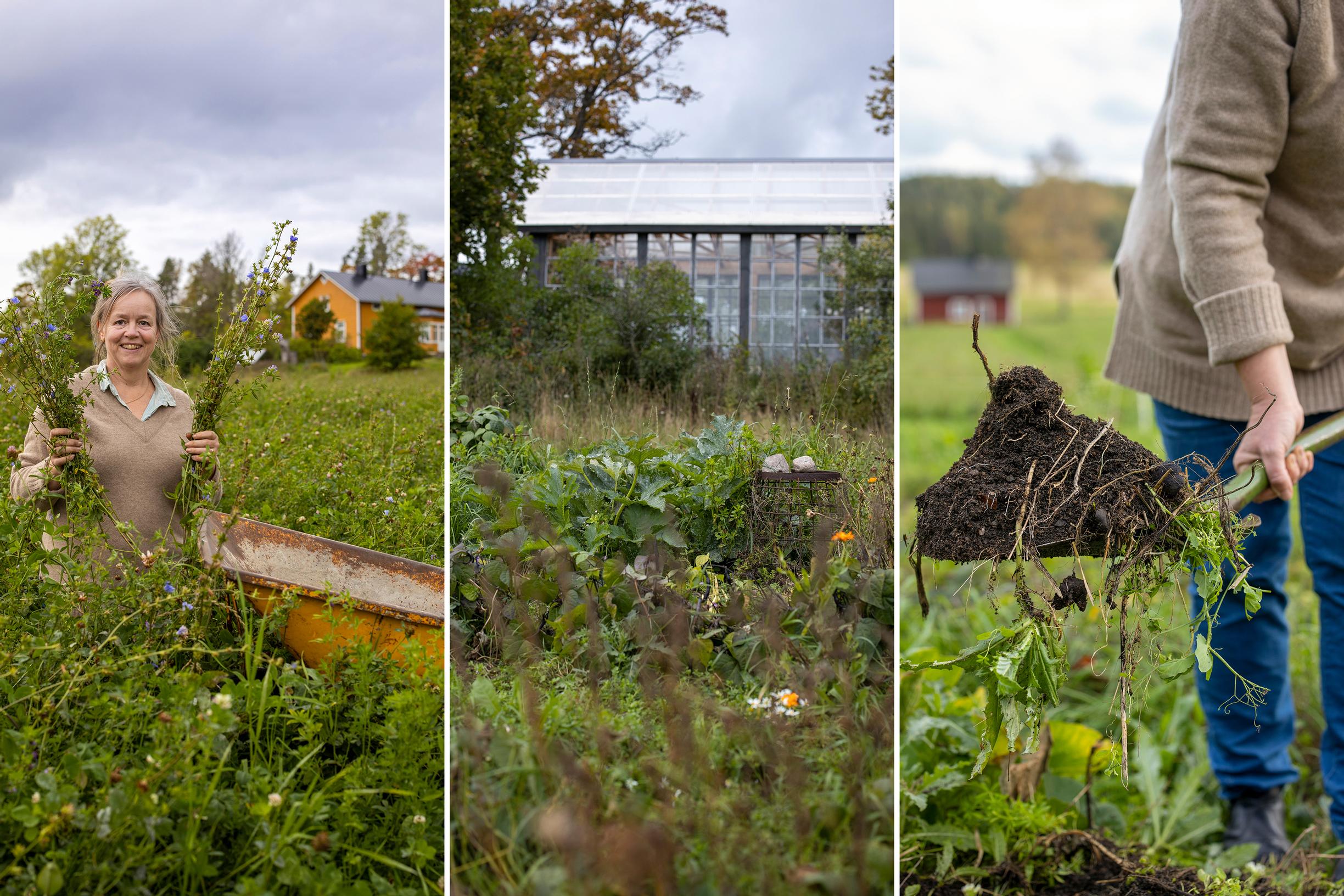
No bare soil in Nina’s garden: “When the soil is healthy and diverse, the plants stay healthy too”
Finnish Nina Långstedt’s most important cultivation method is never leaving the soil bare at any point. In addition to her main crops, she also grows green manure and undergrowth plants that cover and nurture the soil. Green manure crops also provide food for pollinators.
First, shift your mindset a little. This is Nina Långstedt’s advice when you start talking about regenerative cultivation, green manuring, and other soil management methods.
“If you have spent years farming with conventional methods, this can be hard to accept. Regenerative farming changes so many things. For instance, if I make a mistake, I can’t fix it with chemicals like in conventional farming. Instead, I have to solve it in a different way. It might be a bit more challenging, but it’s far more interesting.”
Nina is the seventh generation of farmers at the Krämars farm in Inkoo, Finland. During her watch, the grain farm switched to organic farming 15 years ago. It was an ideological choice—Nina believes organic methods are the only way to produce healthy food while keeping the soil and environment healthy as well. The fertility of the fields is maintained through green manuring and crop rotation.
Nina tends her expansive vegetable garden on the edge of rolling farmland using the same methods. However, she does give her plants an extra boost by using compost made from her own chickens’ bedding.
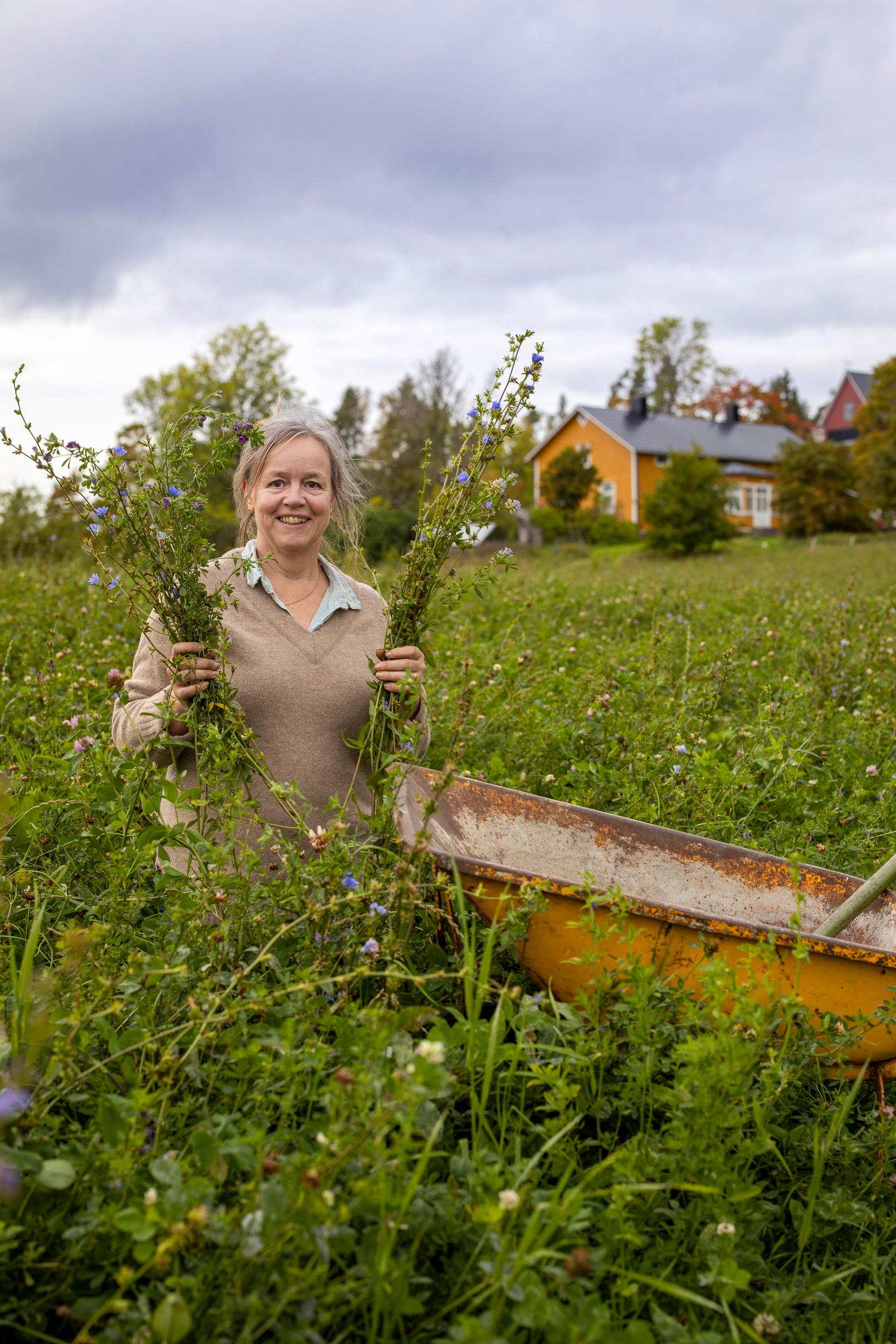
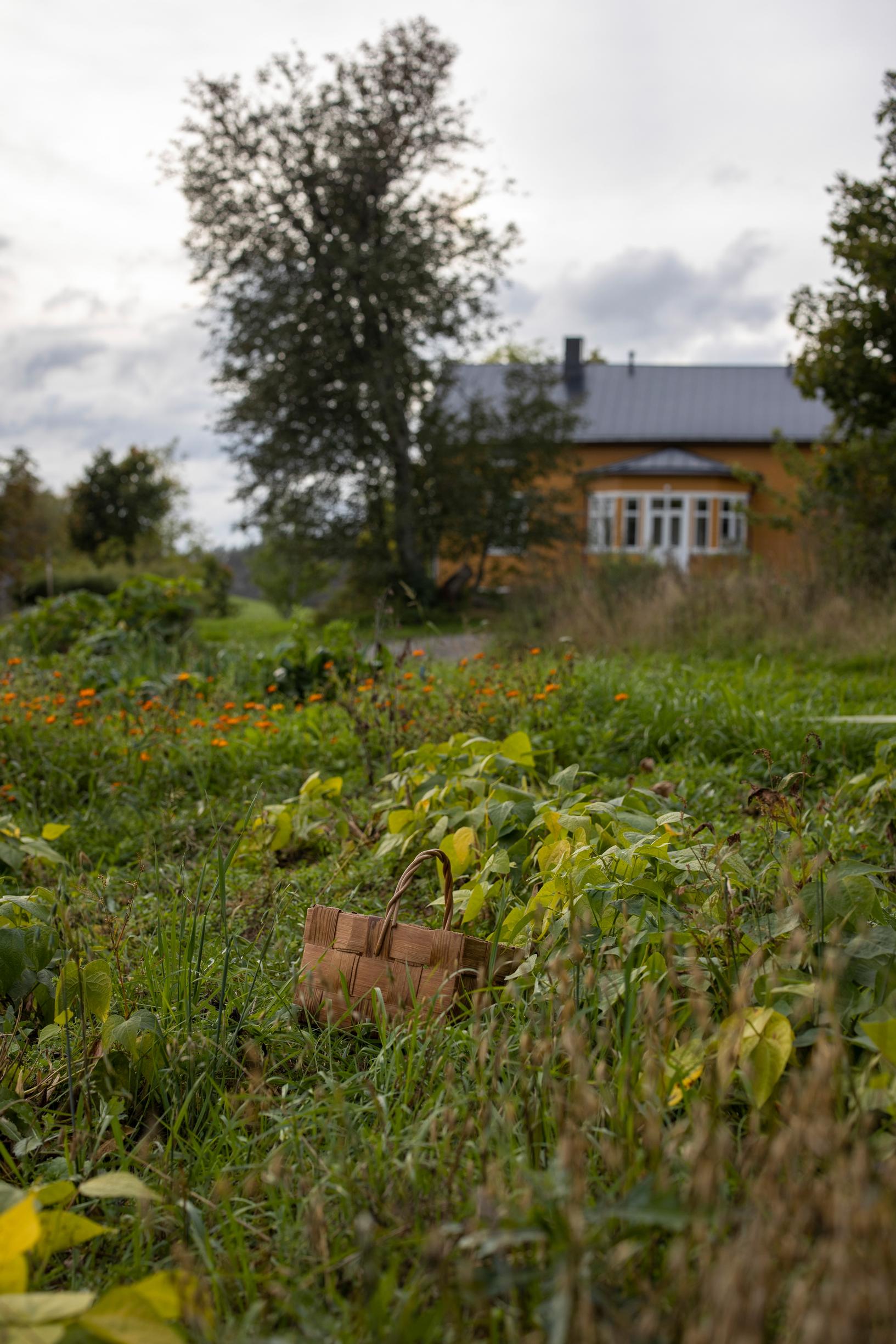
In the fields as well as in the vegetable garden, the soil remains well covered by plants. Nina points out that this is exactly what happens in nature, where plants quickly occupy any area of exposed soil.
“If I don’t sow something in a particular spot, nature will do it for me. By sowing, I get to decide what grows in that area.”
Vegetation protects the soil from excessive heat, drying winds, washing away in the rain, and an explosion of weeds. Actually, Nina doesn’t refer to any plant on her property as a weed. To her, they’re wild plants that happen to find a suitable place to grow—maybe even in her vegetable garden.
Besides, these plants can be beneficial. For example, a thistle has a deep root that loosens the soil and brings nutrients within reach of other plants. Covering the soil is so important that anything growing there is a plus.
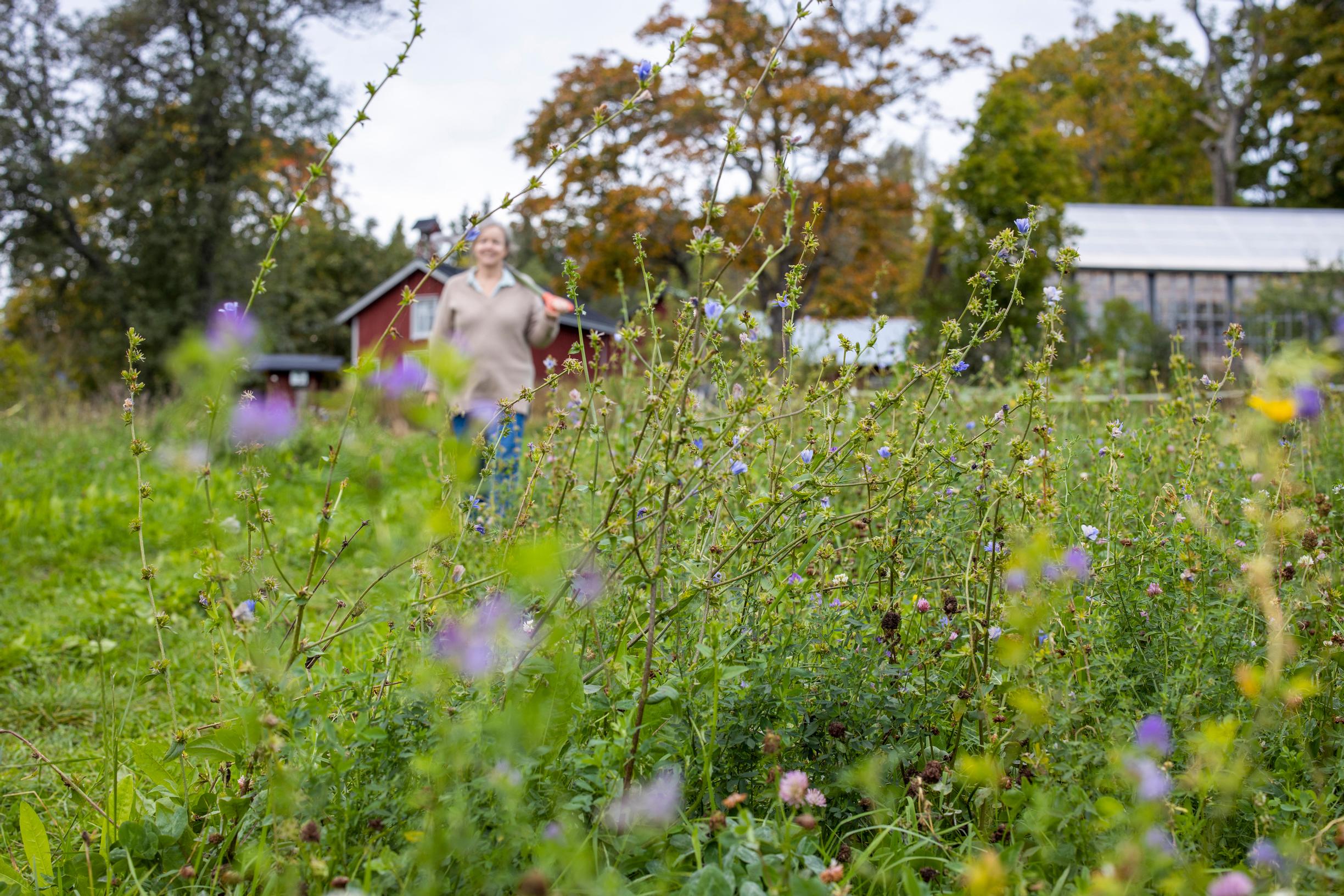
All green manure crops provide food for pollinators.
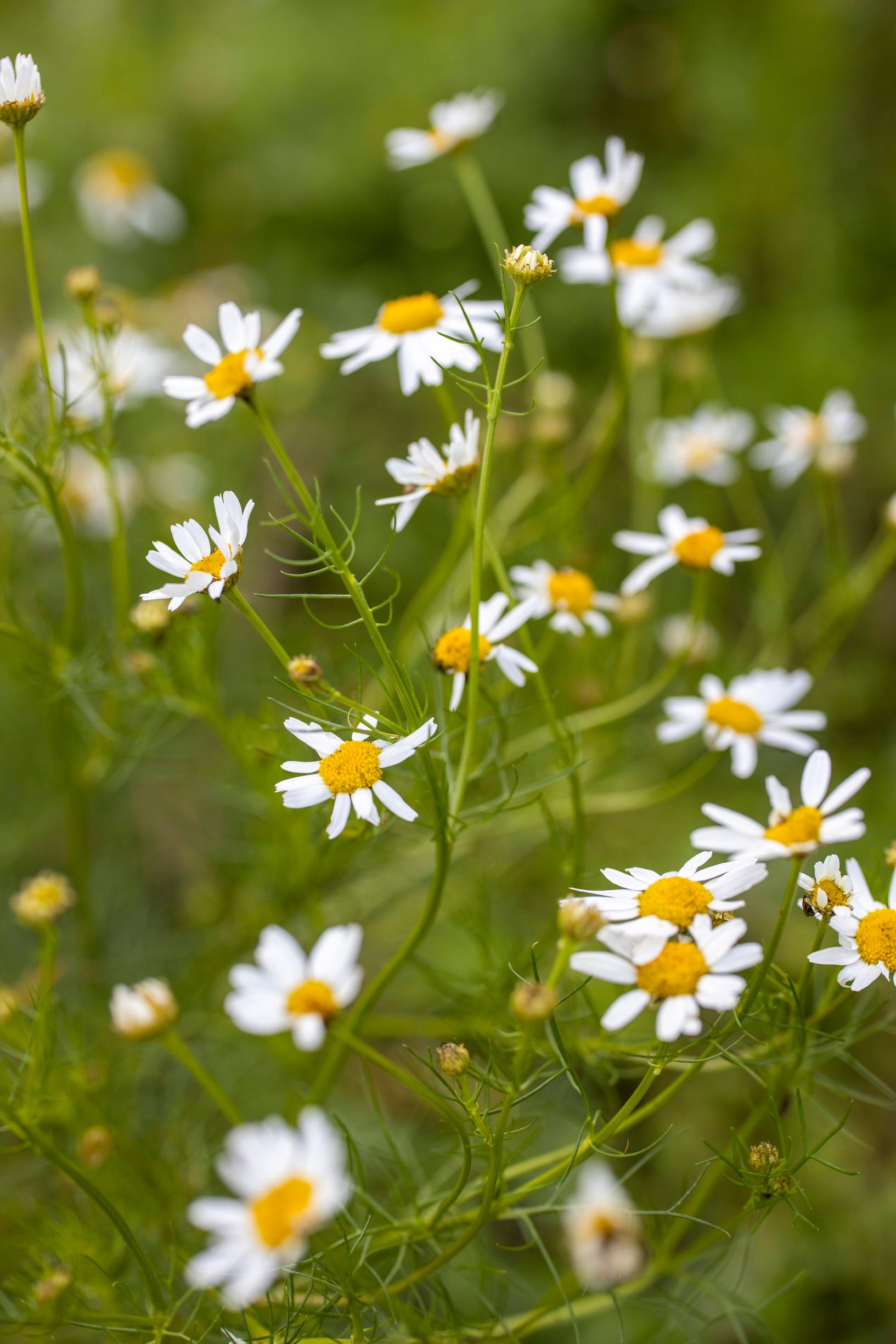
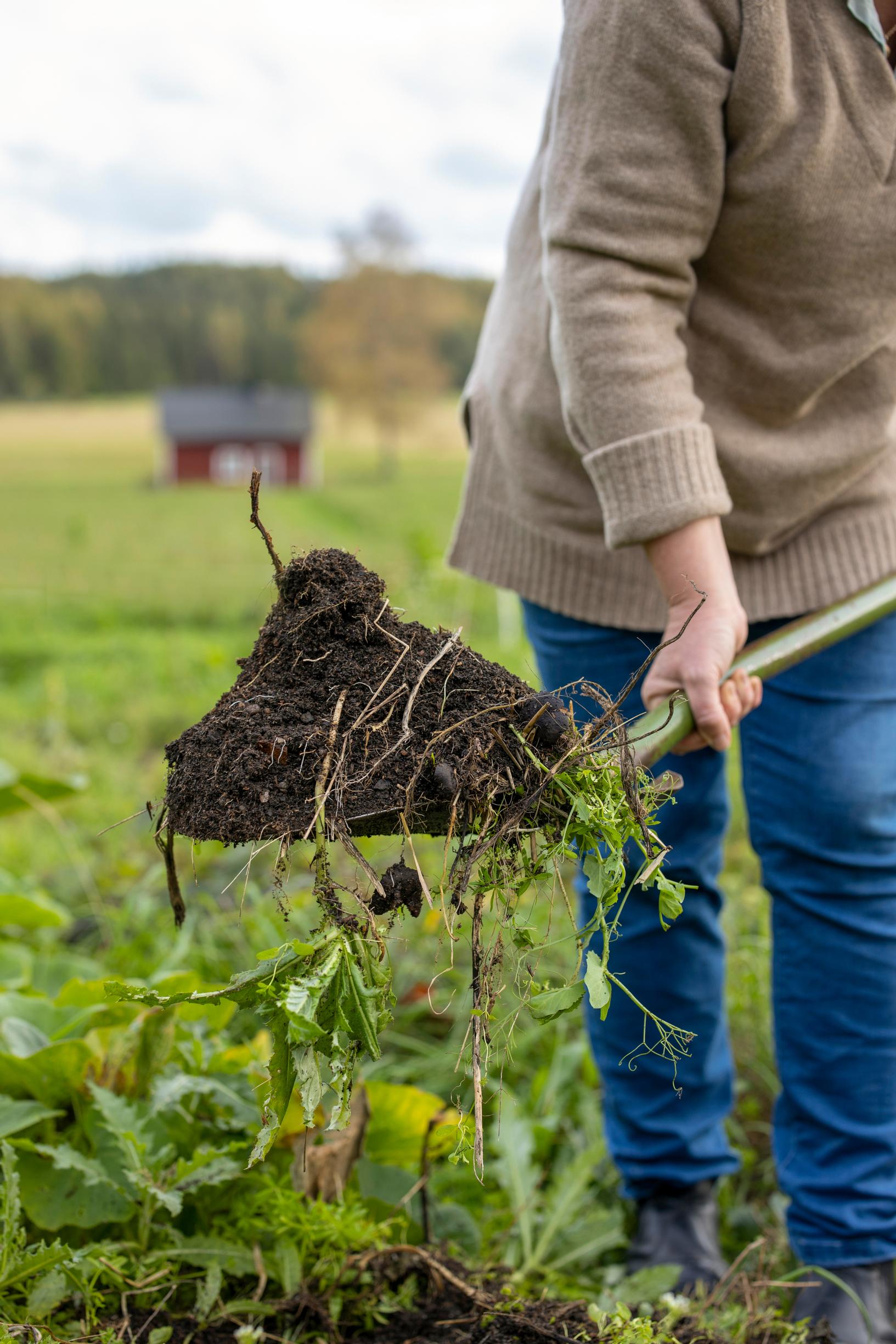
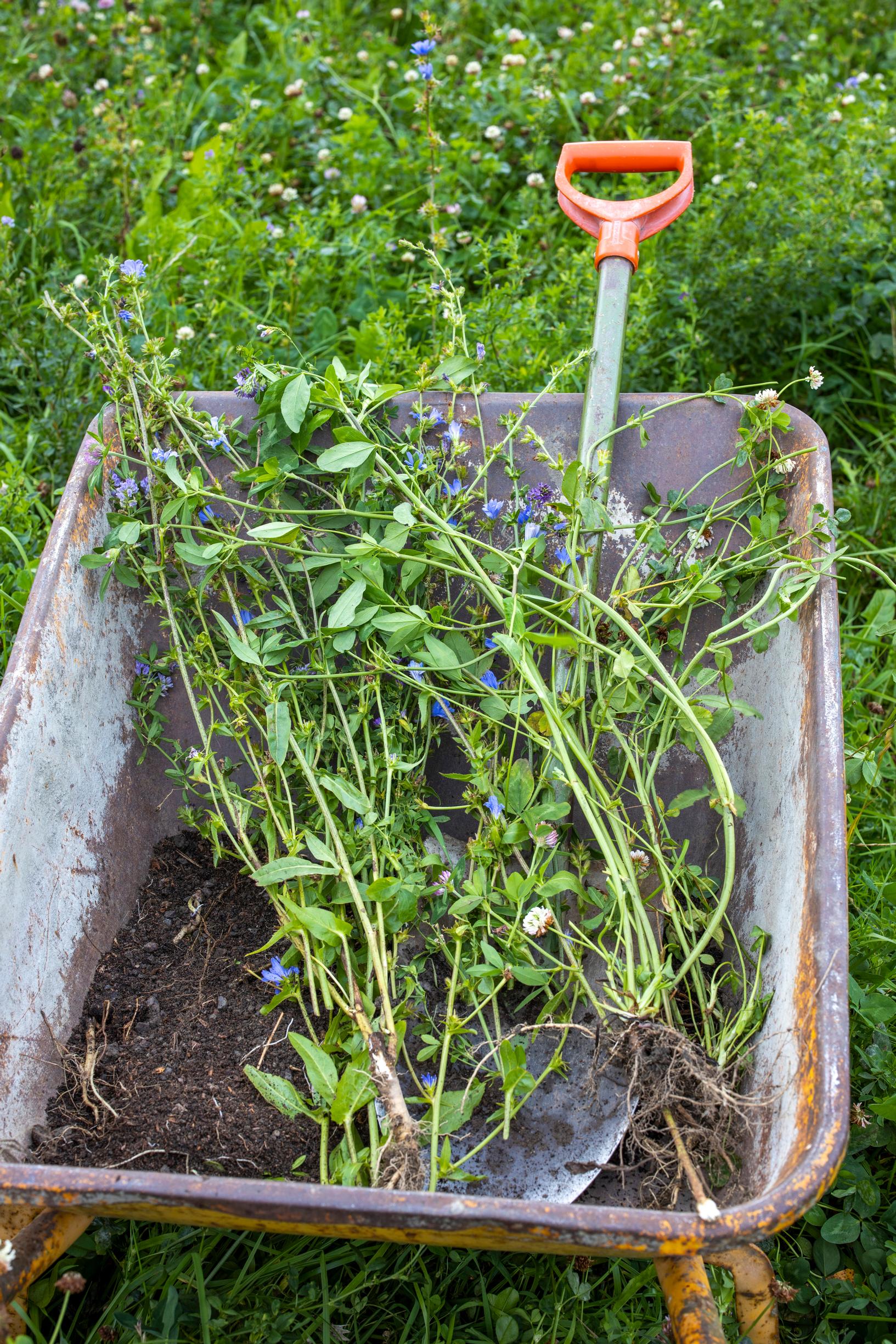
Nina sows plants for many different purposes. Along with her main crops, she also grows green manure and undergrowth plants. Green manure crops maintain or even improve the soil’s health and lower the risk of pests and diseases. Some of them, like clovers and legumes, fix nutrients into the soil. Buckwheat and other deep-rooted species break up the soil at greater depths and bring nutrients within reach of other plants. Shallow-rooted species protect and aerate the top layer of soil.
All green manure crops also boost the diversity of soil micro-organisms and provide food for pollinators. When the green manure vegetation is finally tilled back into the soil, it increases organic matter. Soil that is rich in organic matter holds water and nutrients well. These qualities create the right conditions for good growth, help prevent drought stress, and even out temperature fluctuations.
“When the soil is healthy and diverse, the plants stay healthy, too. That’s just how it works.”
Every plant serves multiple purposes. That’s why you should grow at least five different green manure crops at the same time, Nina says.
“Even though clover is an excellent soil-improving plant, it’s not enough on its own. Ideally, there should be so many green manure crops that you can’t even remember them all.”
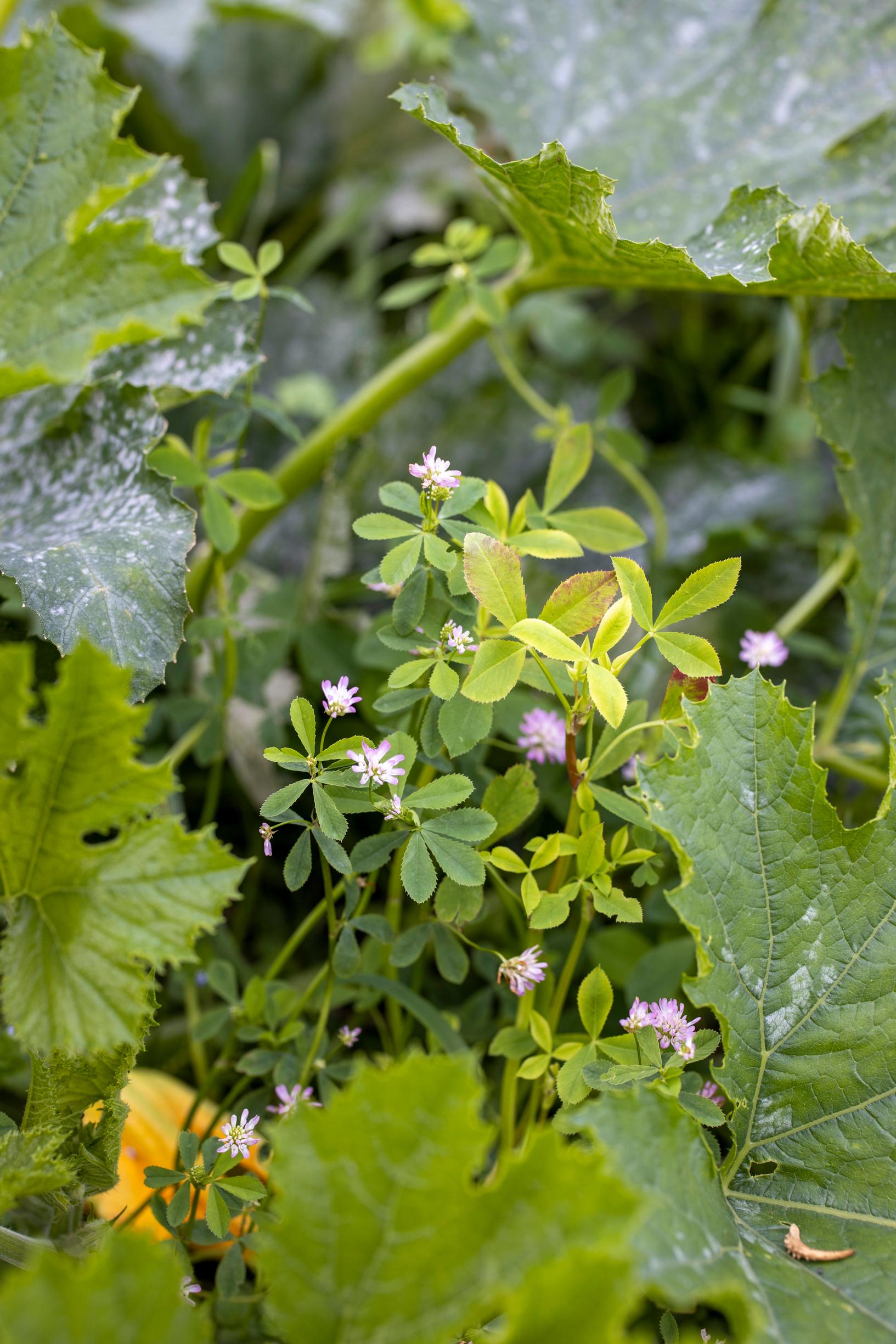
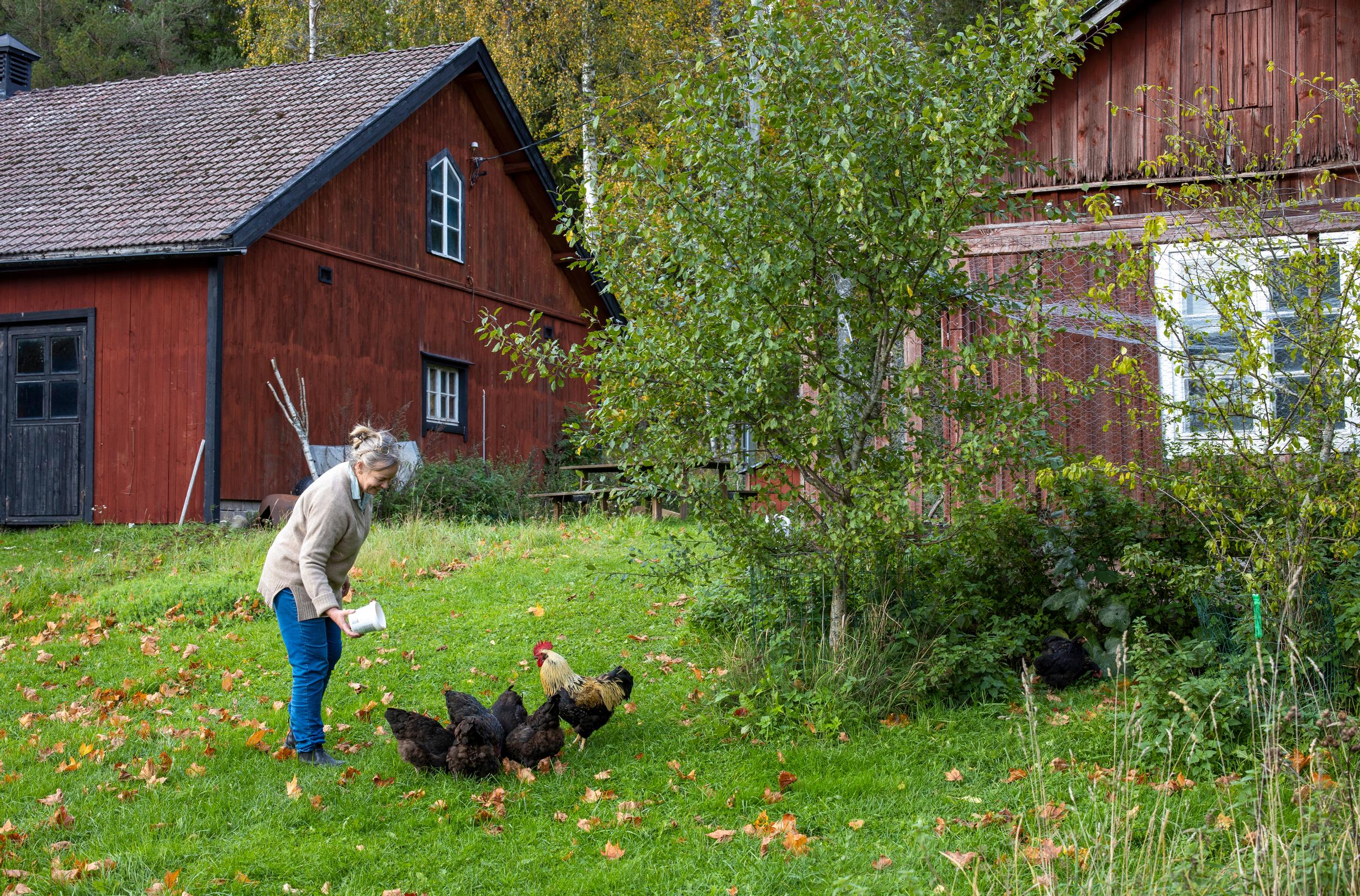
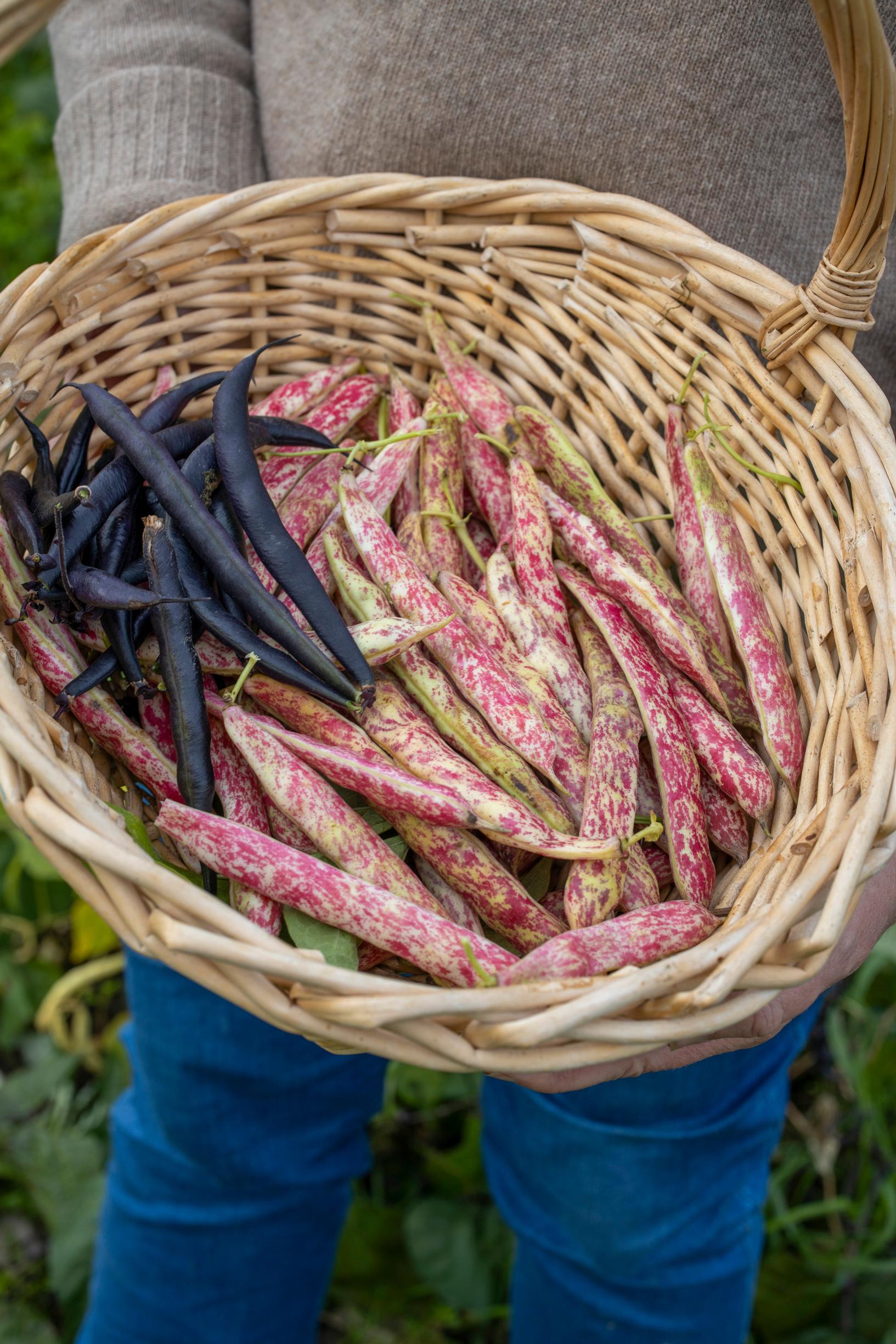
Understory plants grow beneath and around the main crop. They keep the soil suitably moist and loose. For example, beneath her zucchini plants, Nina has sown an annual living groundcover of ryegrass and reversed clover, where the zucchini fruits can rest.
Calendula self-seeds as an understory plant in the vegetable garden. To Nina, it’s not just a pretty annual that adds color deep into fall; she also uses calendula like a vegetable in everything from soups to pies.
“I let everything grow as long as possible in the fall. That way, the vegetable garden traps carbon for the largest part of the year. I don’t remove the understory or green manure plants; I leave them as ground cover for the winter. The soil’s micro-organisms take care of most of the vegetation by the following spring.”
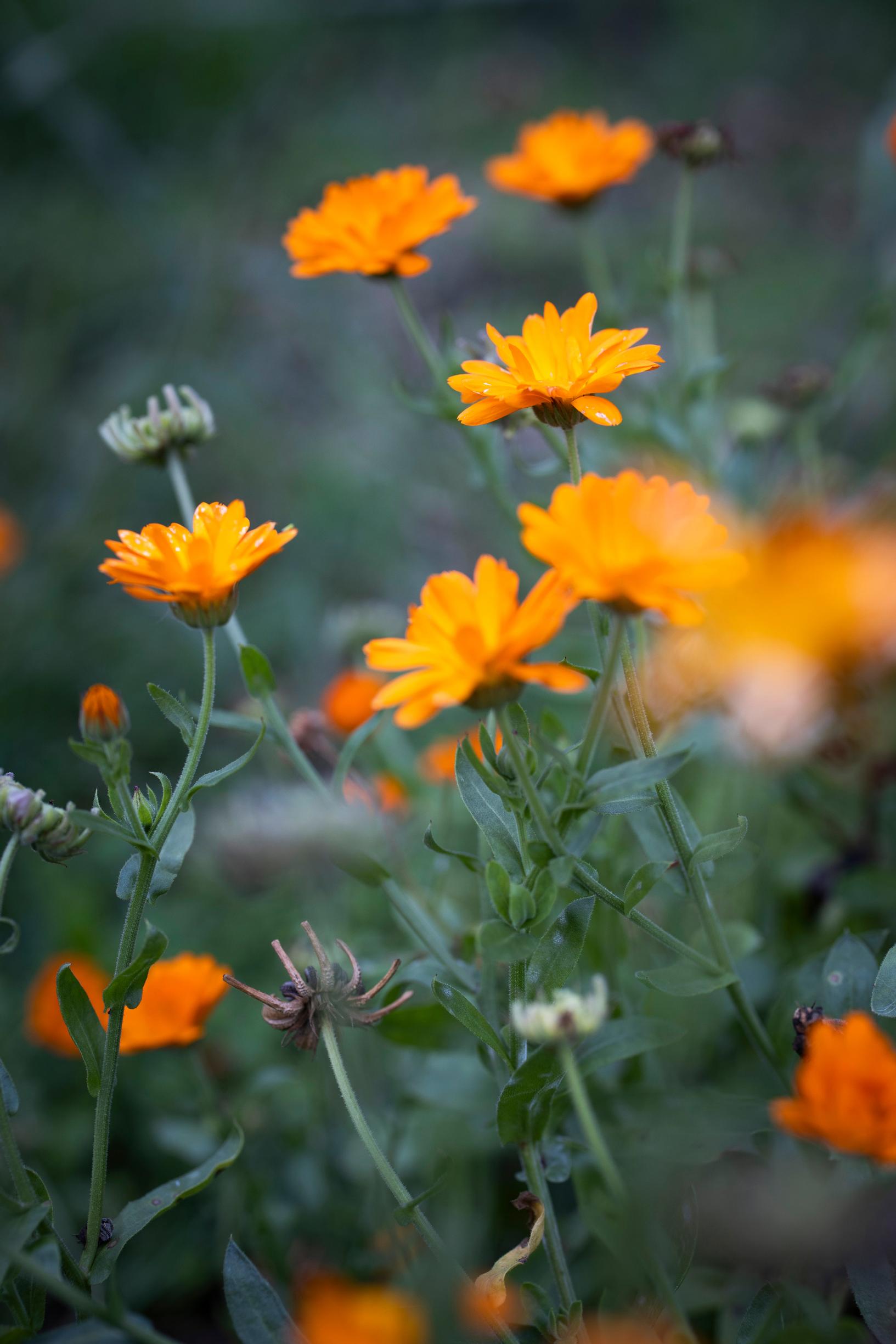
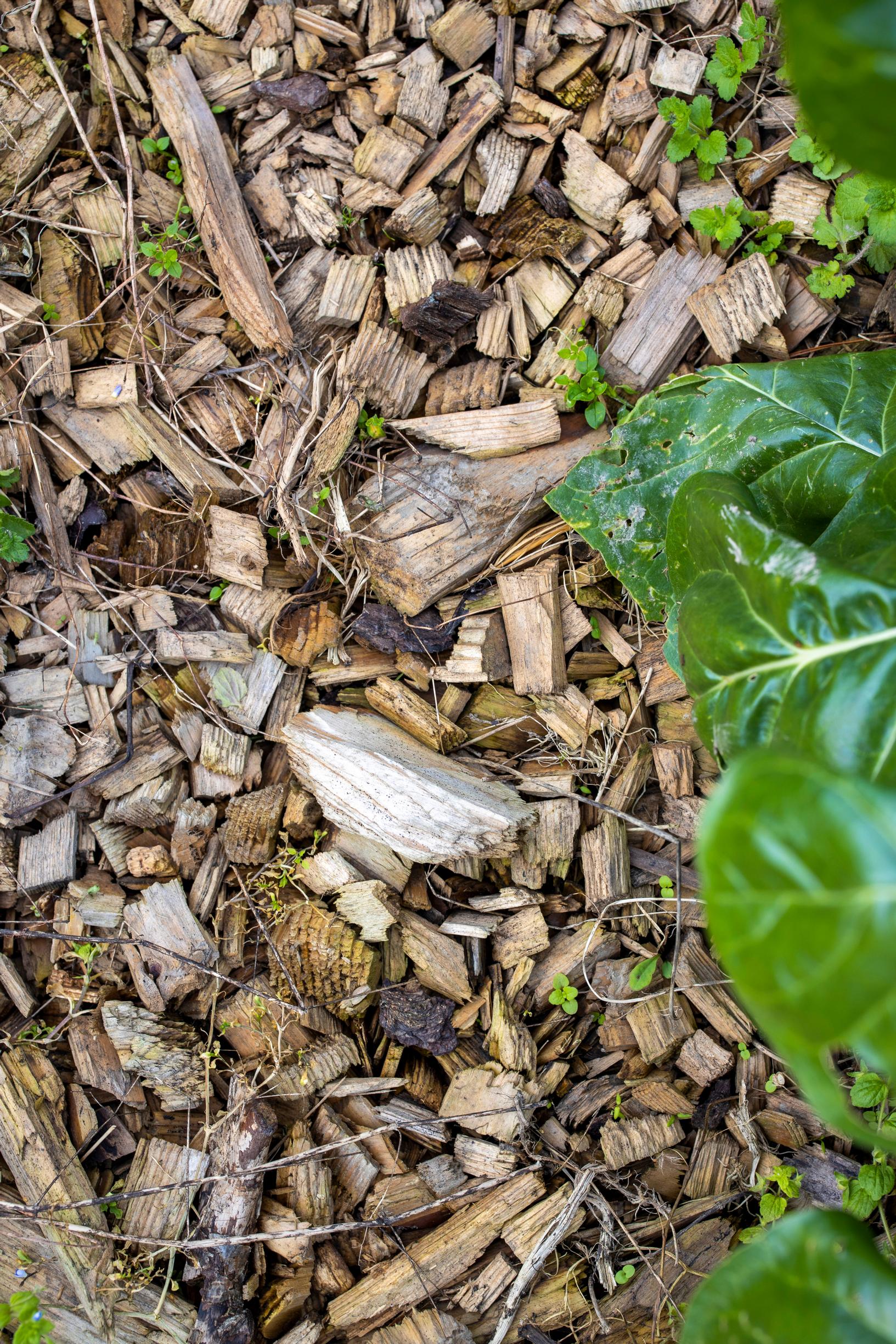
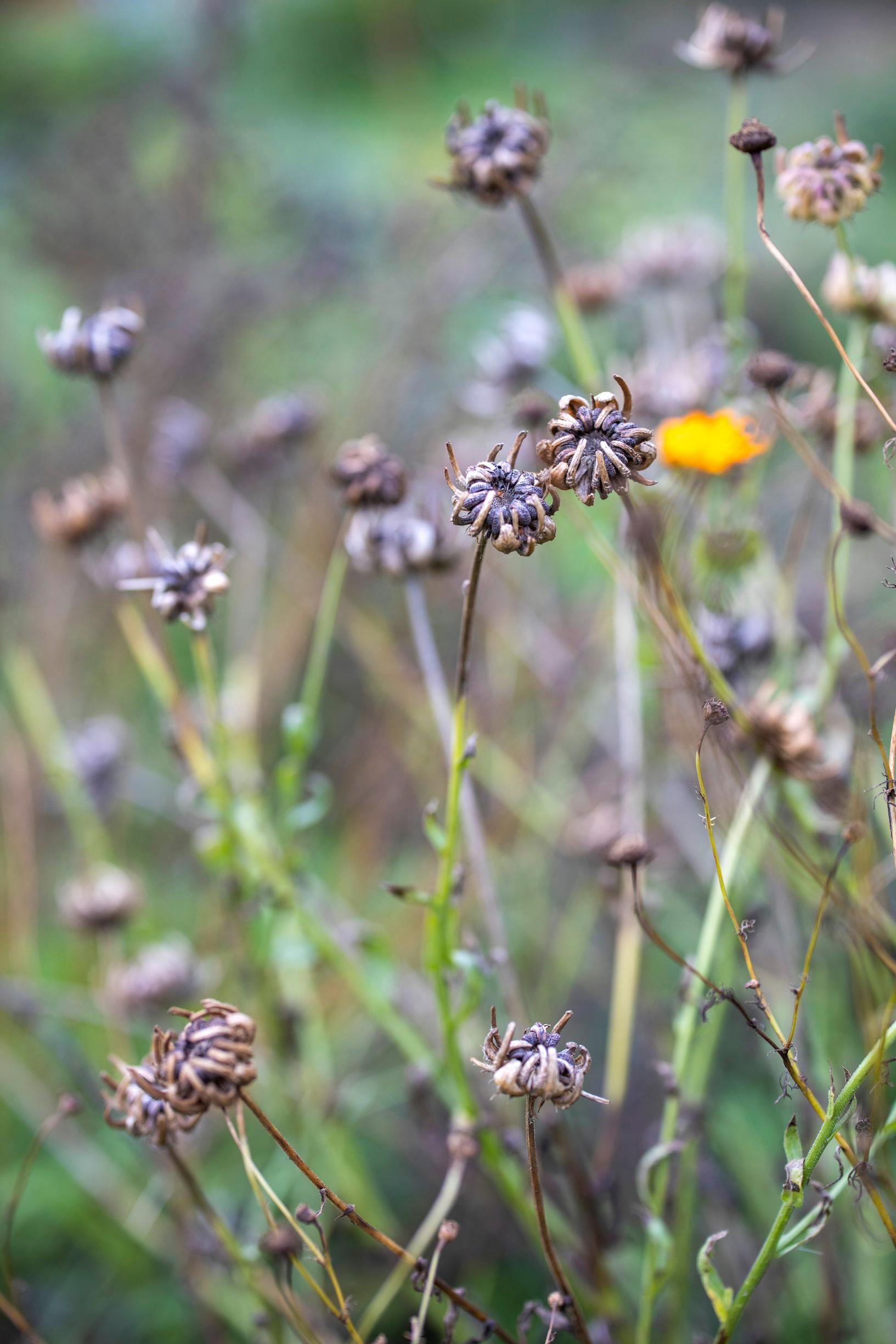
6 × green manure plant
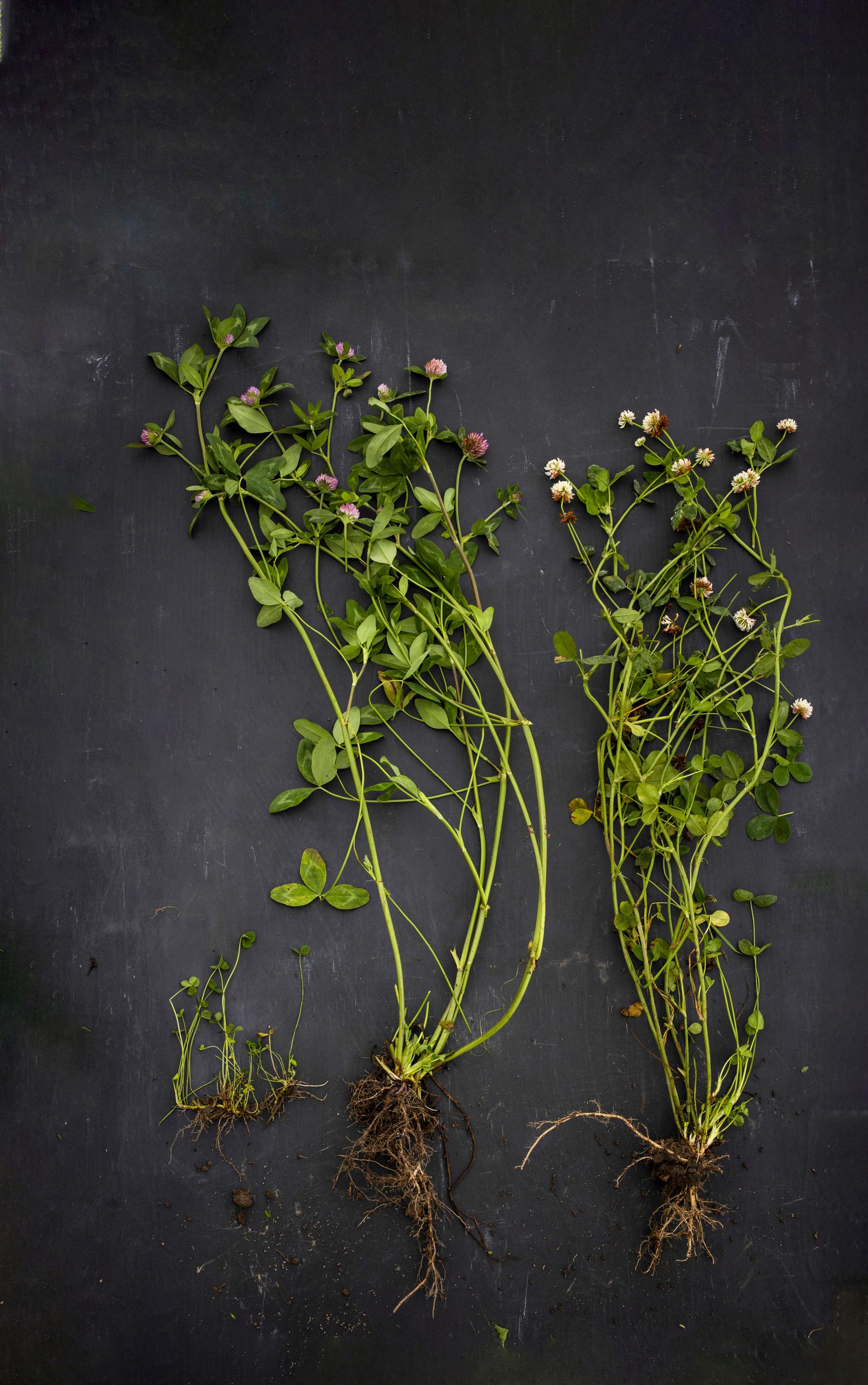
1. Subterranean clover
Trifolium subterraneum
An annual clover that grows tightly and close to the ground. Suitable as an understory plant. Nitrogen fixer.
2. Red clover
Trifolium pratense
A perennial, winter-hardy clover with vigorous growth that fixes nitrogen from the air. It also serves as a food source for many insects.
3. Alsike clover
Trifolium hybridum
Less demanding than red clover. Tolerates acidic soil better than other clovers. Perennial.
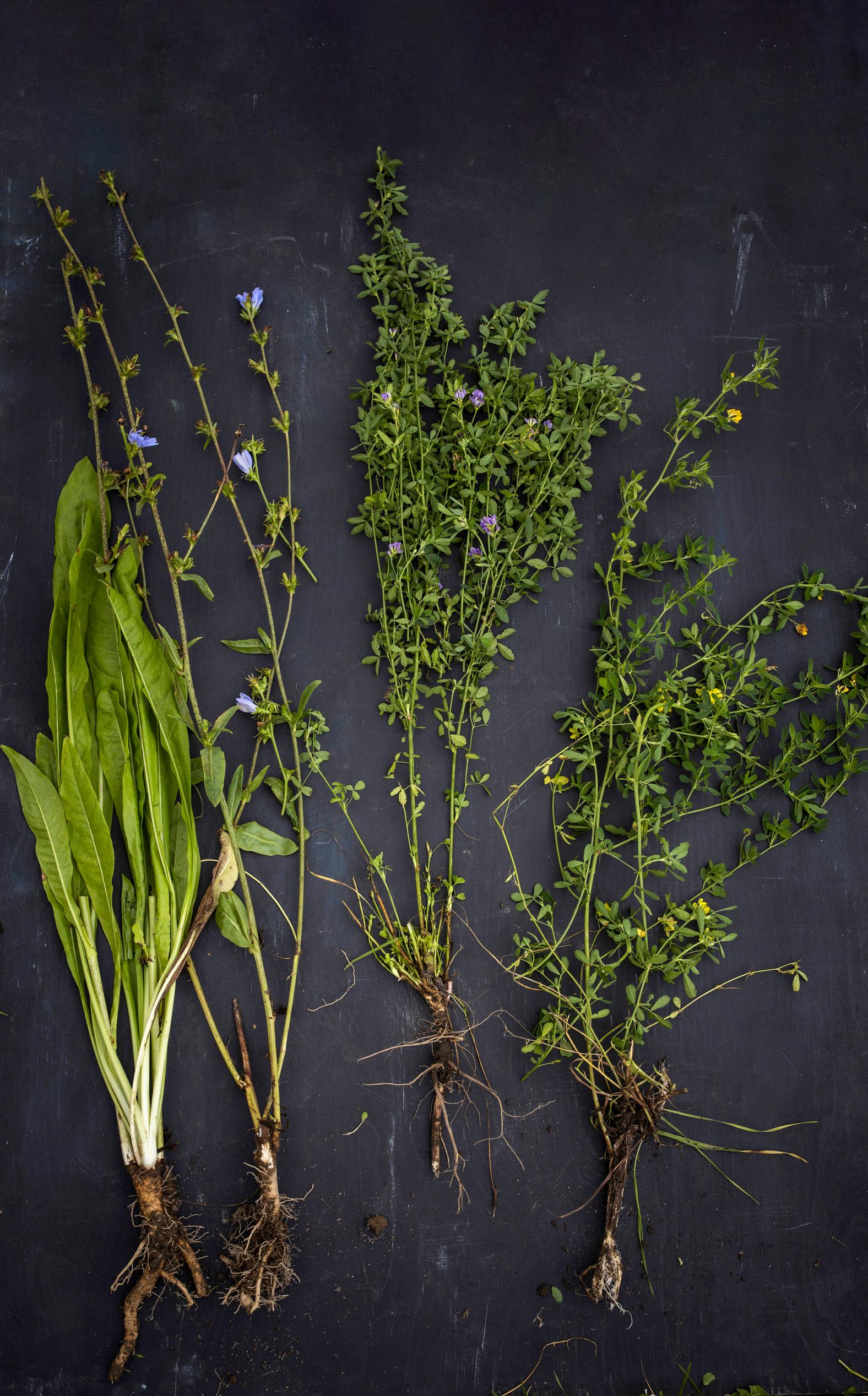
4. Chicory
Cichorium intybus
Its thick root is reminiscent of the dandelion root, but it goes even deeper. This perennial species is highly effective at loosening soil.
5. Alfalfa
Medicago sativa
Its extremely deep and wide root system aerates the soil. This perennial species also fixes nitrogen.
6. Sickle alfalfa
Medicago falcata
Easier to grow than its relative, alfalfa. A perennial nitrogen-fixer.
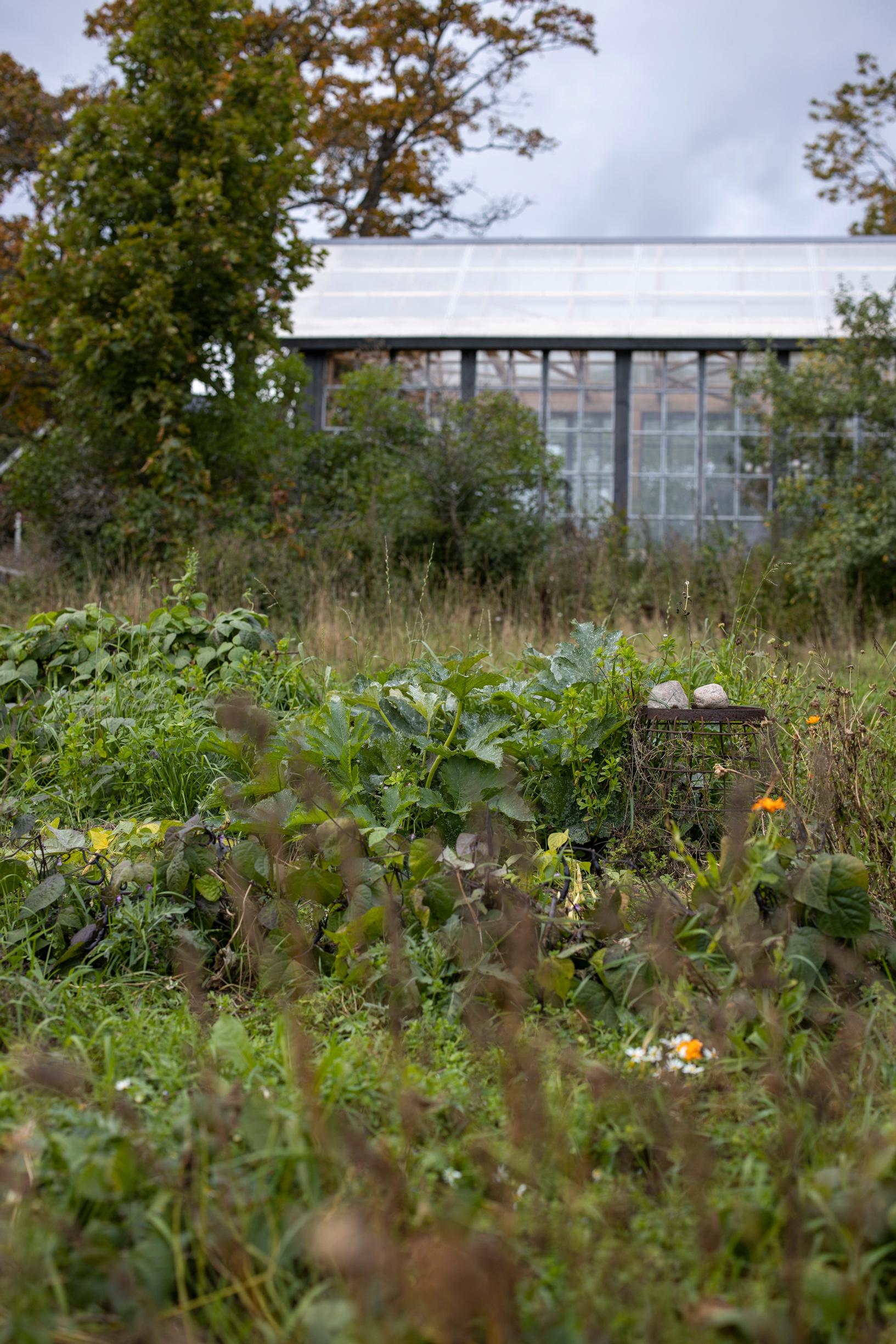
Nina’s vegetable garden tips
- Make use of companion planting in your cultivation. For instance, potatoes and beans make good partners. Grow them in the same spot during alternate years.
- Try a hügel bed. It’s a large mounded growing bed made up of layers of organic materials such as branches, wood chips, plant debris, and compost. Every spring, and as needed throughout the summer, add more organic matter to the surface of the bed. When planting seedlings, dig a suitably sized hole and fill it with soil. Squash and cucumbers thrive in this nutrient-rich bed. It’s also a great way to grow new potatoes faster, since the warmth in the mound accelerates their harvest.
- Grow a wide variety of species as crops, green manure, and understory plants. Summer conditions vary, but this way at least some of your plantings will always succeed. A wide range of vegetation also supports biodiversity.
- Create your own seed mixes for green manuring and understory plants, or use pre-made mixes, which are now widely available in small packages suitable for hobby growers. Aim for as many different plant groups as possible—grasses, clovers, as well as mustards, canola, and other brassicas.


